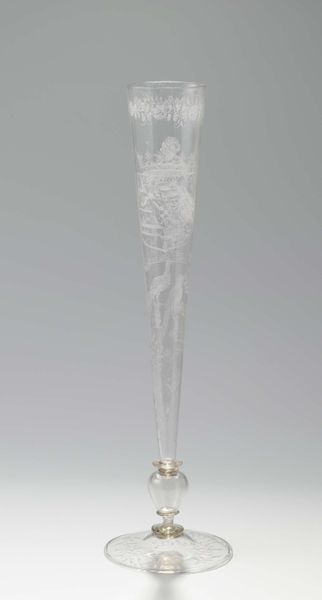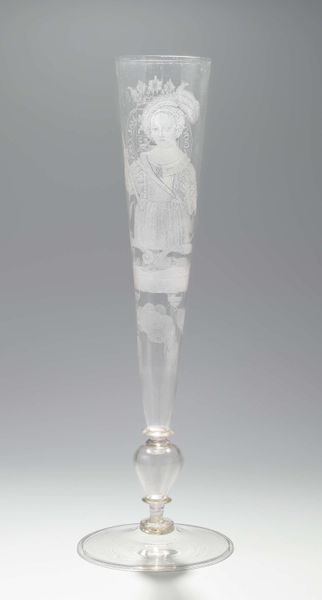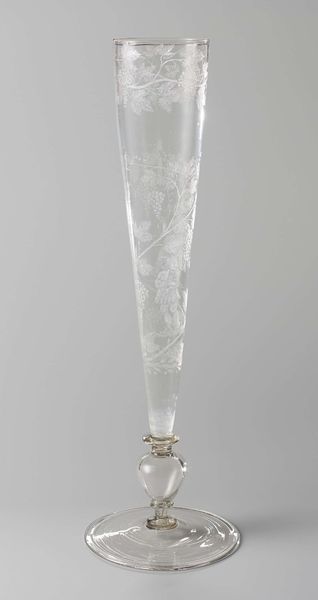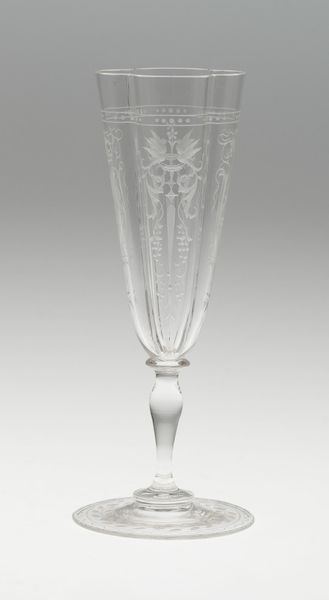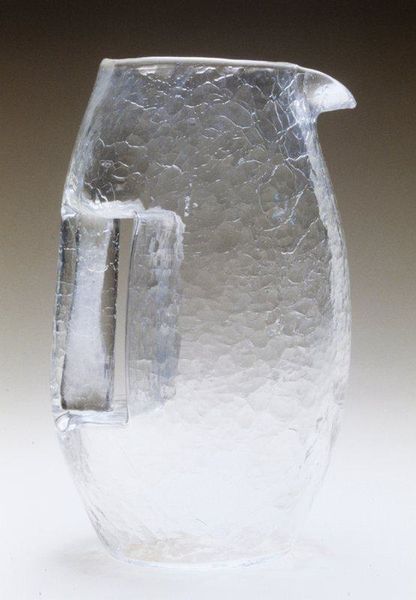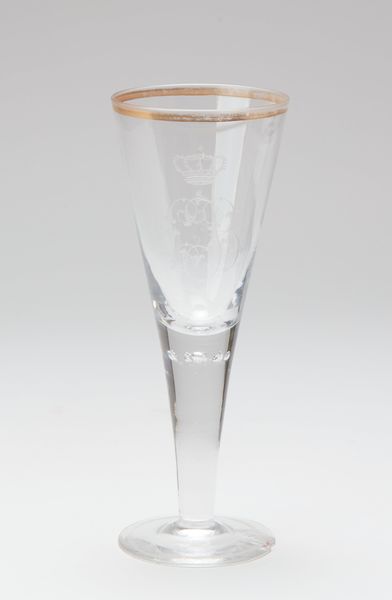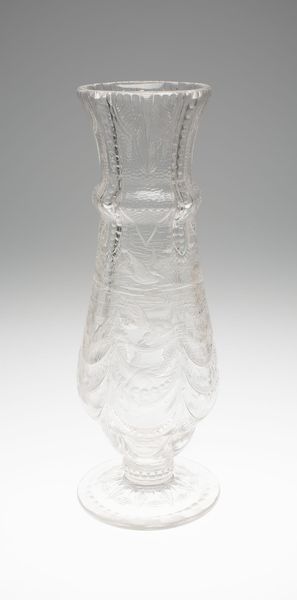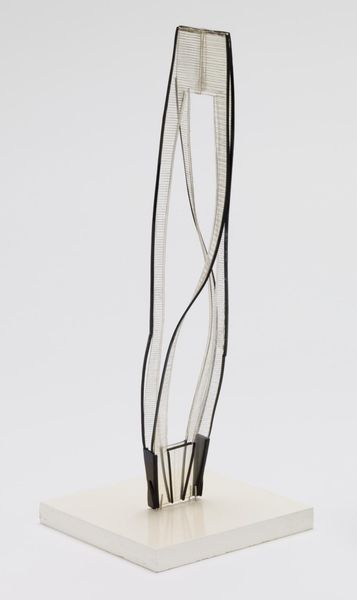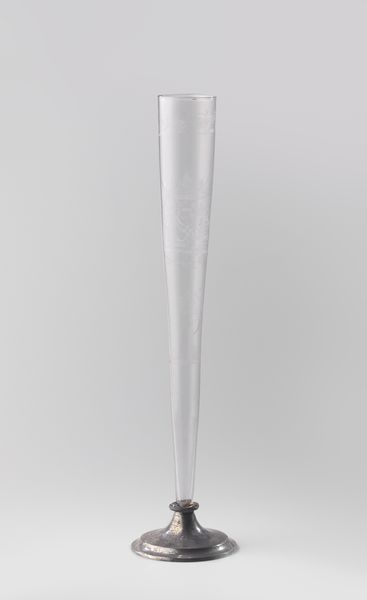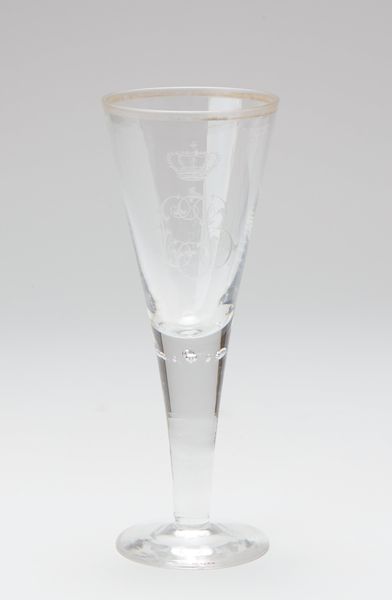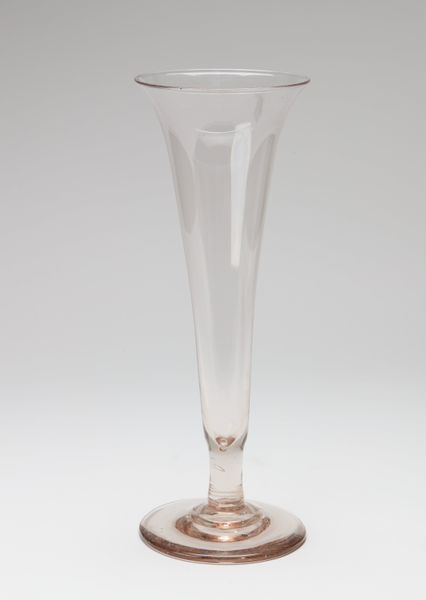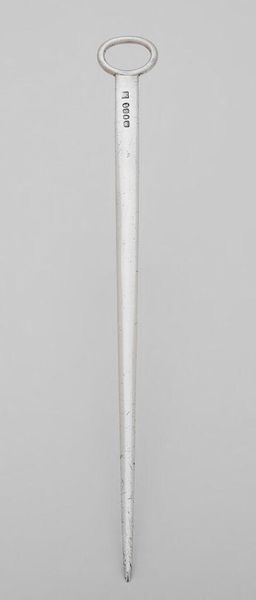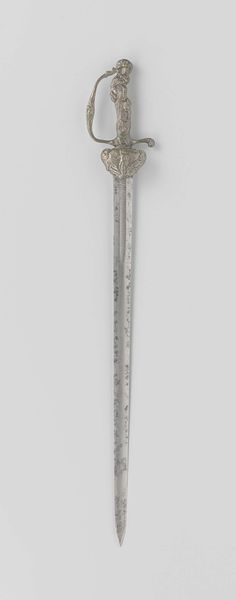
glass, engraving
#
portrait
#
baroque
#
glass
#
engraving
Dimensions: height 37.2 cm, diameter 9.6 cm, weight 170 gr
Copyright: Rijks Museum: Open Domain
This flute glass, an anonymous creation, features a portrait of William II. It's made entirely of glass, formed into a tall, slender shape with a rounded base, and then decorated. The process is fascinating. Molten glass was likely blown and shaped to achieve its elegant form. The portrait and other decorative elements weren't painted on; instead, they were meticulously engraved into the glass surface. This subtractive process required a high level of skill and control. The glassmaker would have used a variety of small tools to carefully carve away the glass, creating a detailed design that catches the light and gives the glass a tactile quality. Engraving transforms the smooth, transparent material into a commemorative object, likely commissioned by someone of means. The act of drinking from it becomes a toast, laden with social and political significance. The glass elevates the everyday act of drinking into a gesture of power and remembrance, blurring the lines between functional object and artwork.
